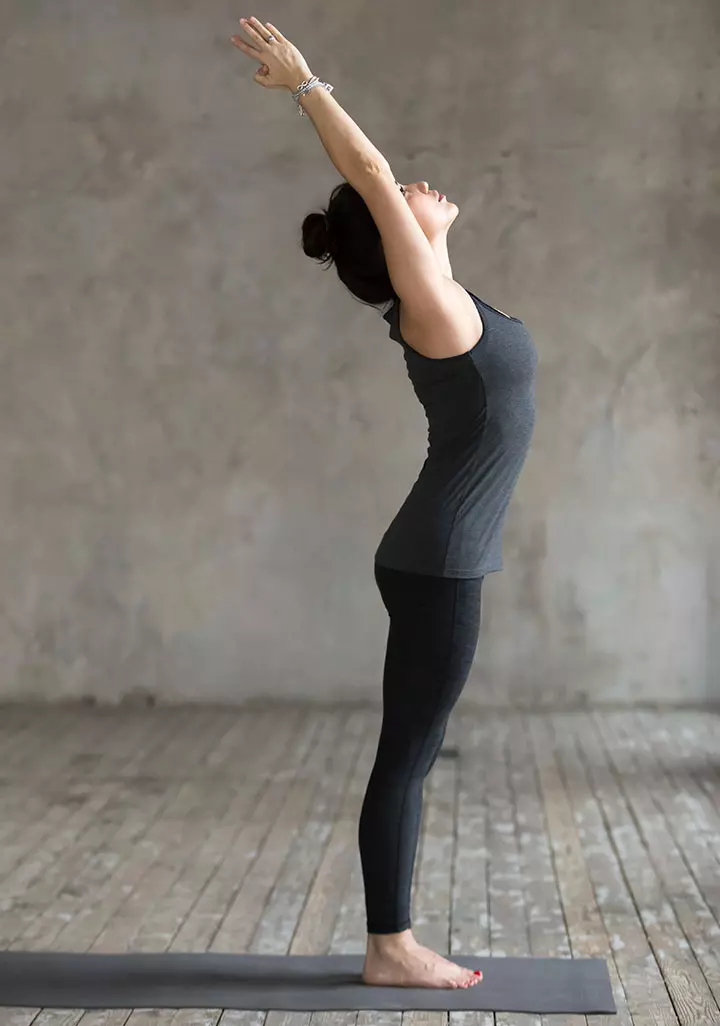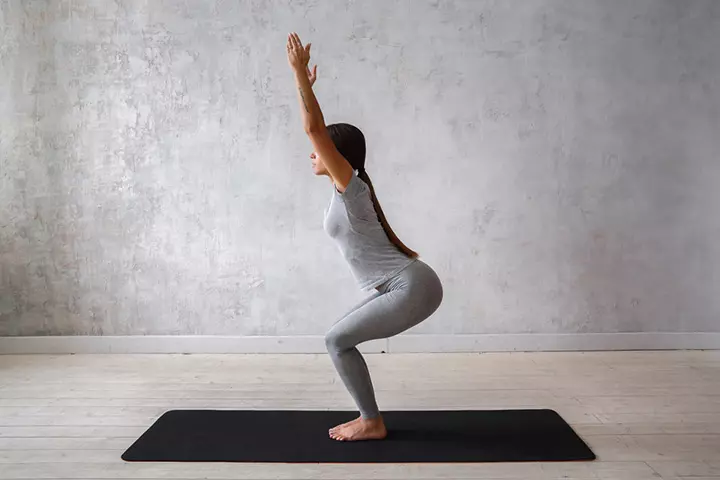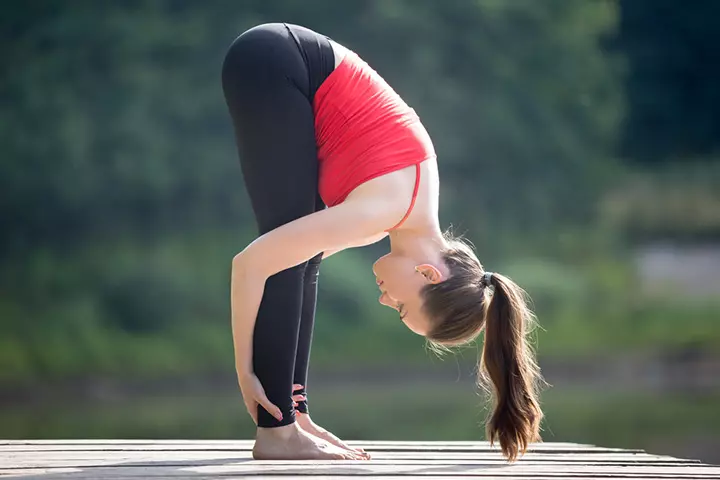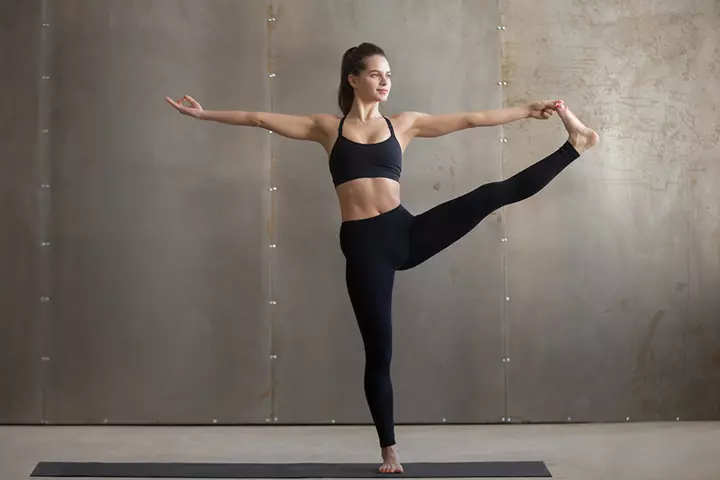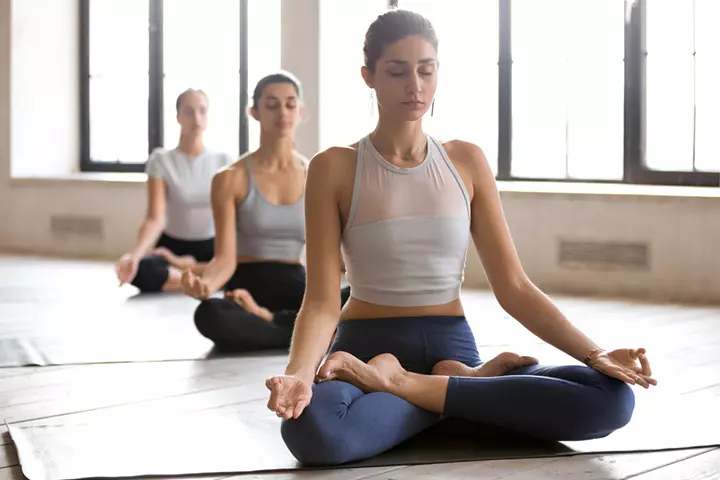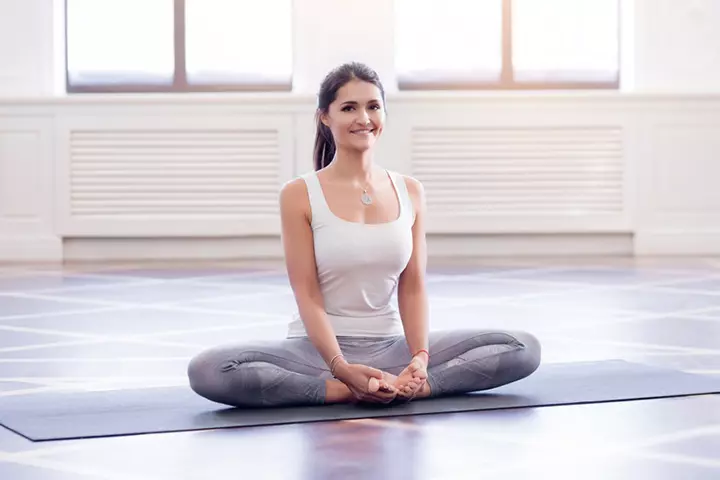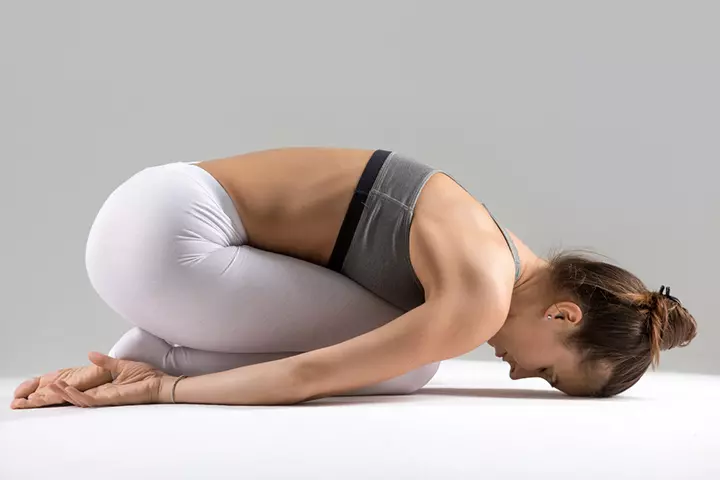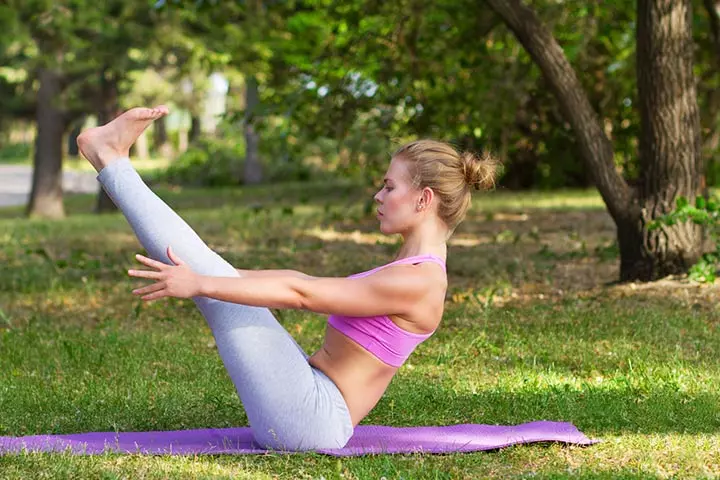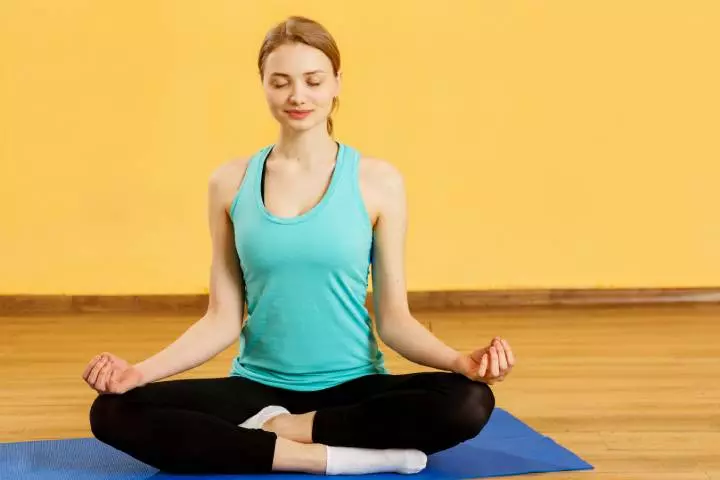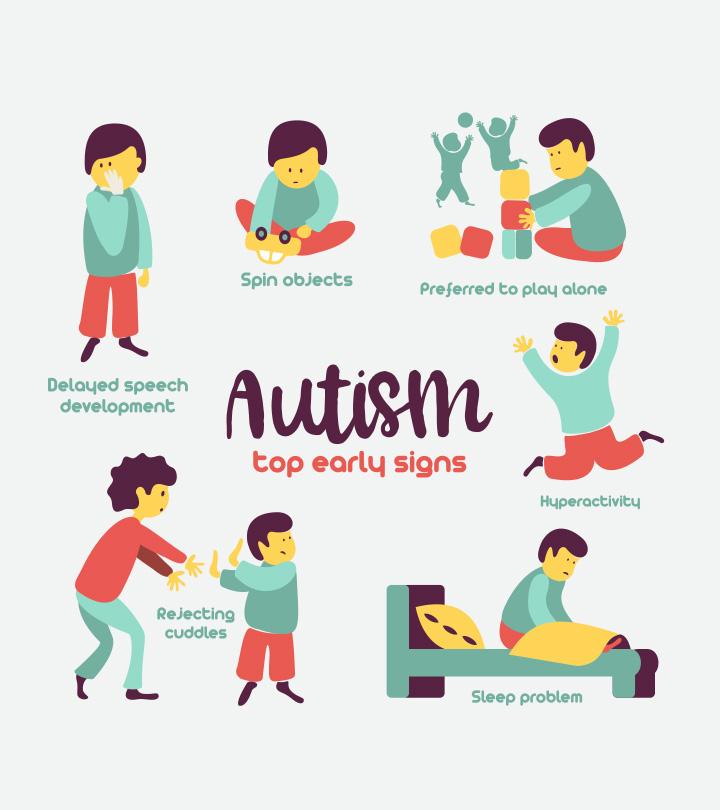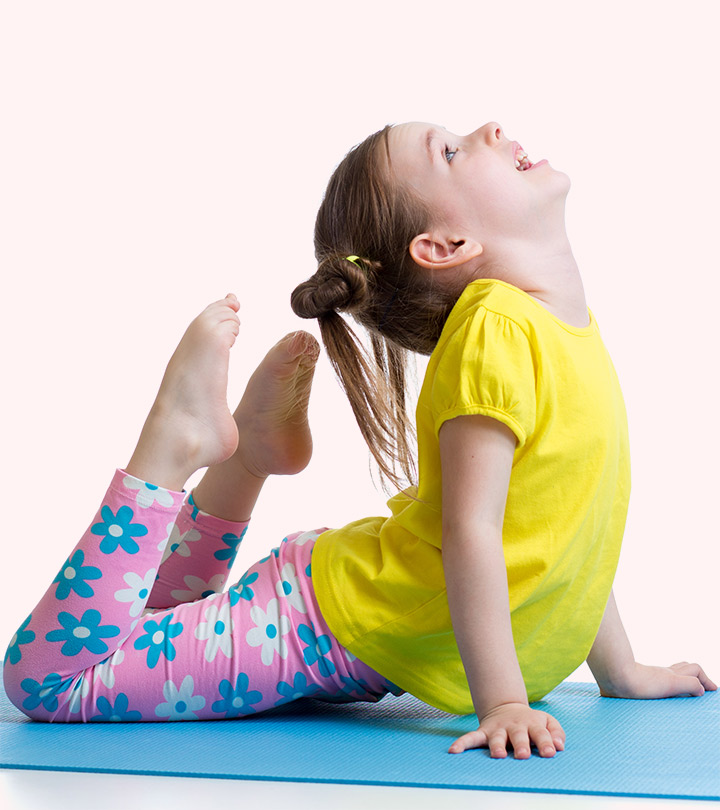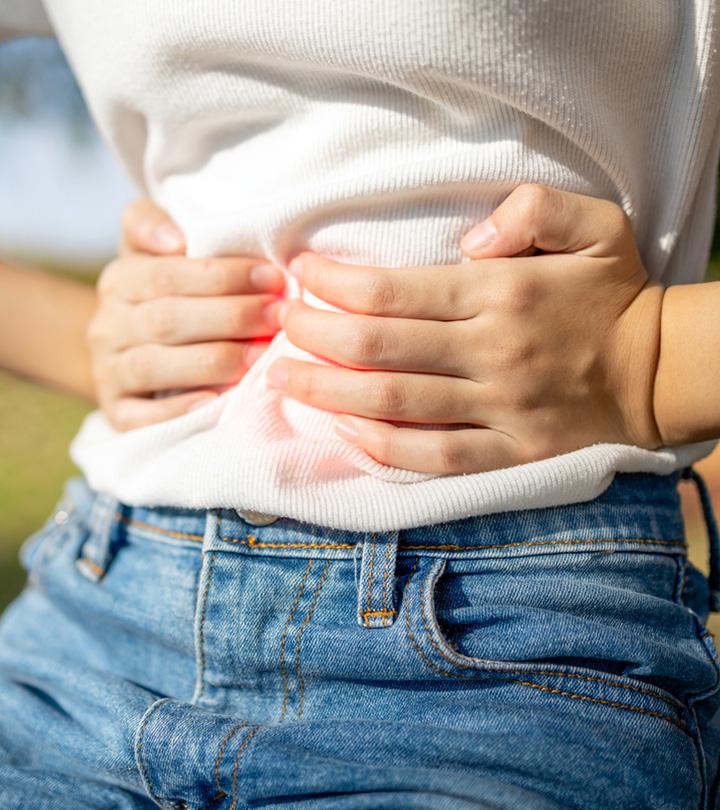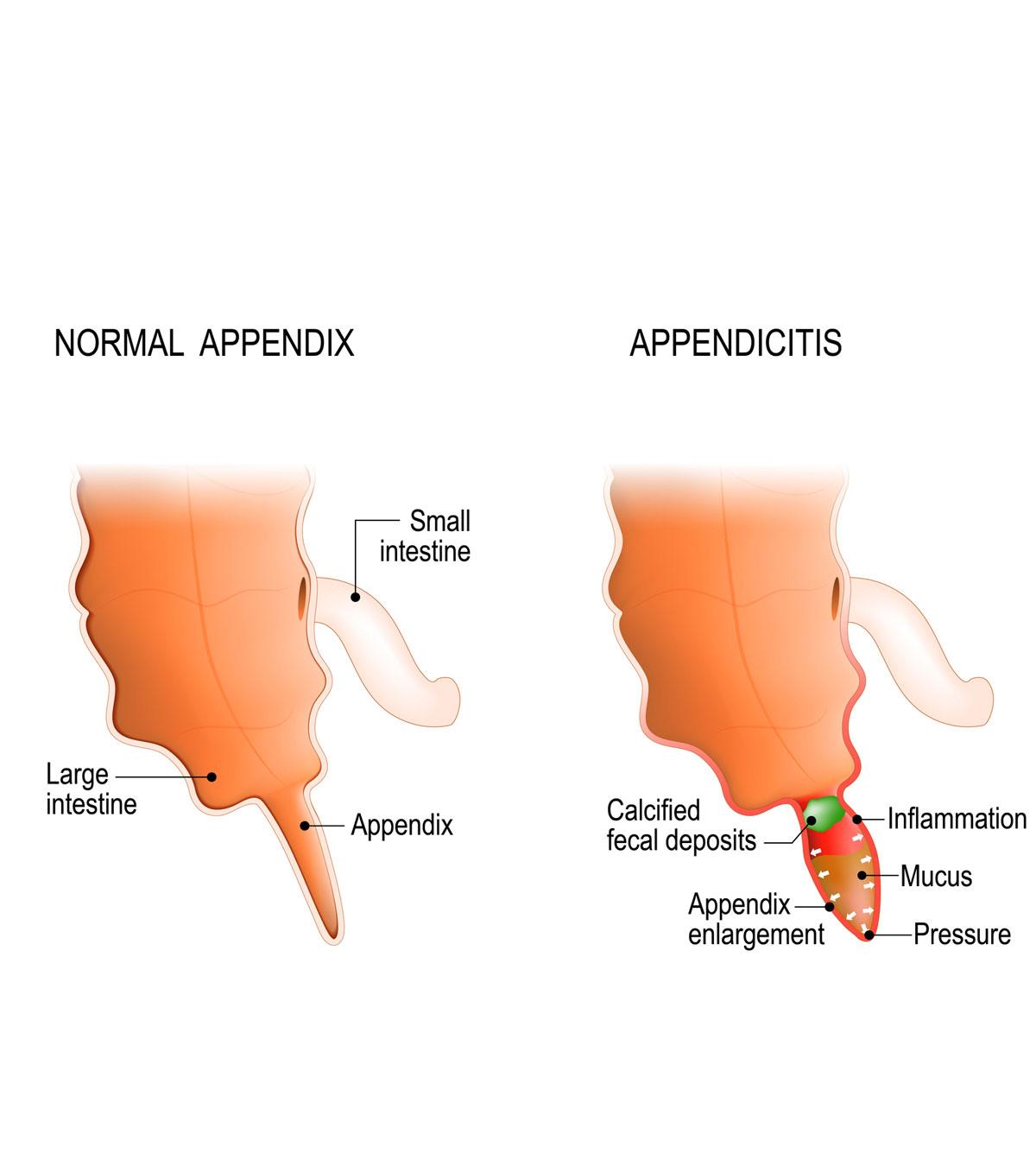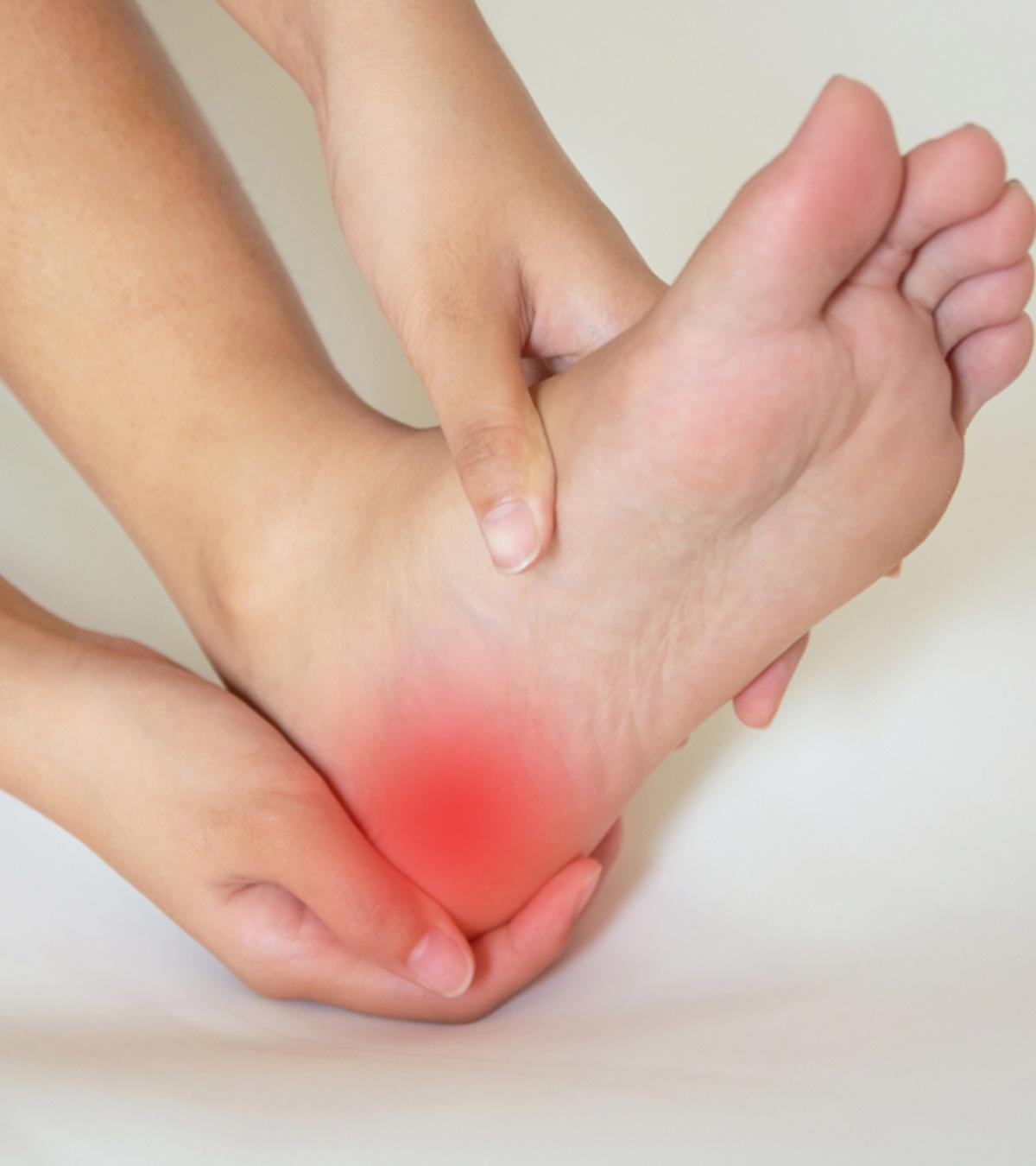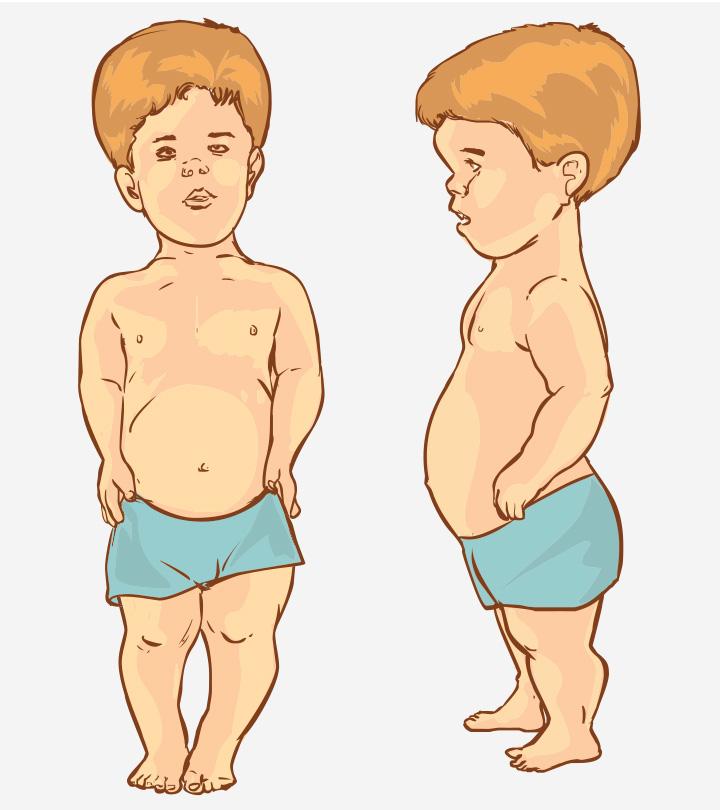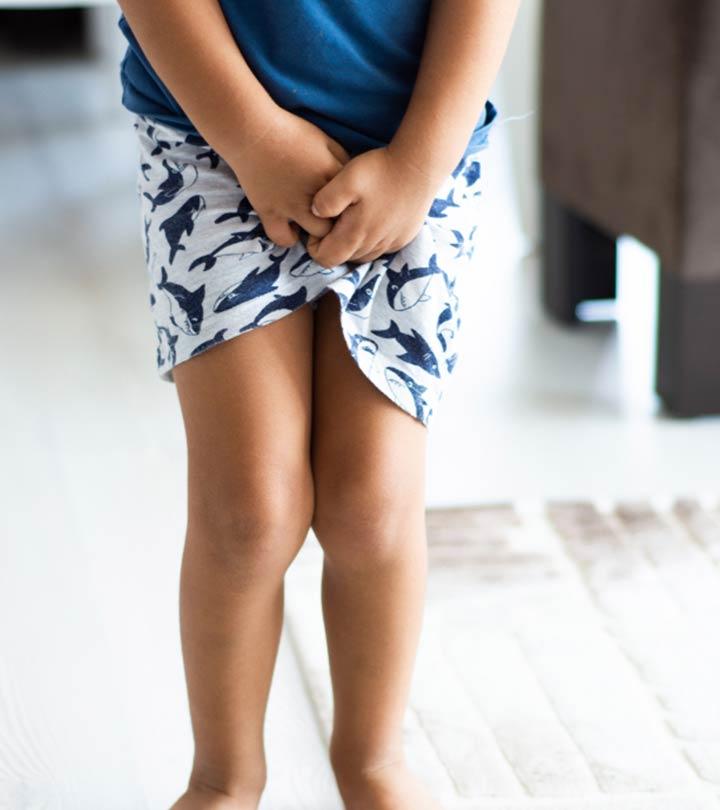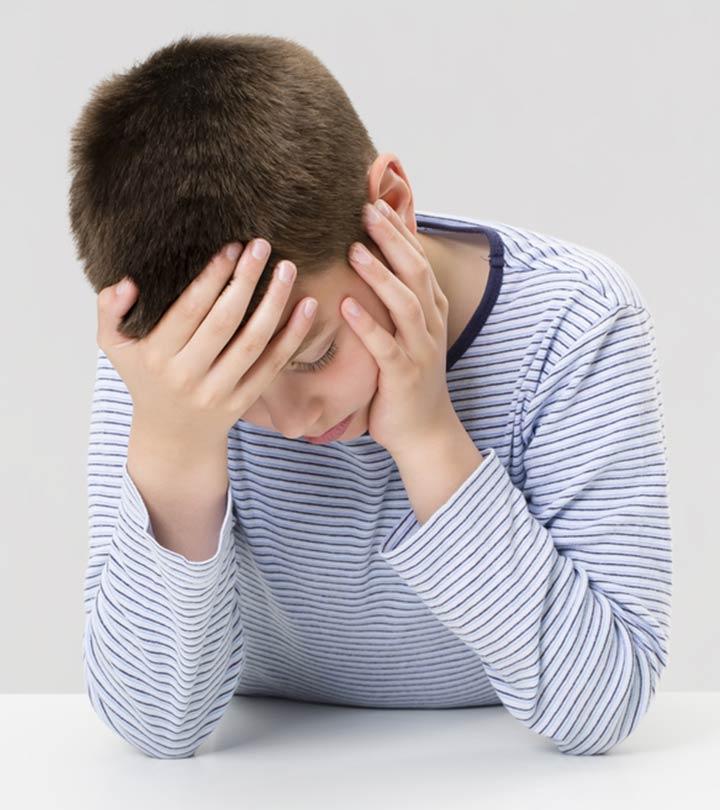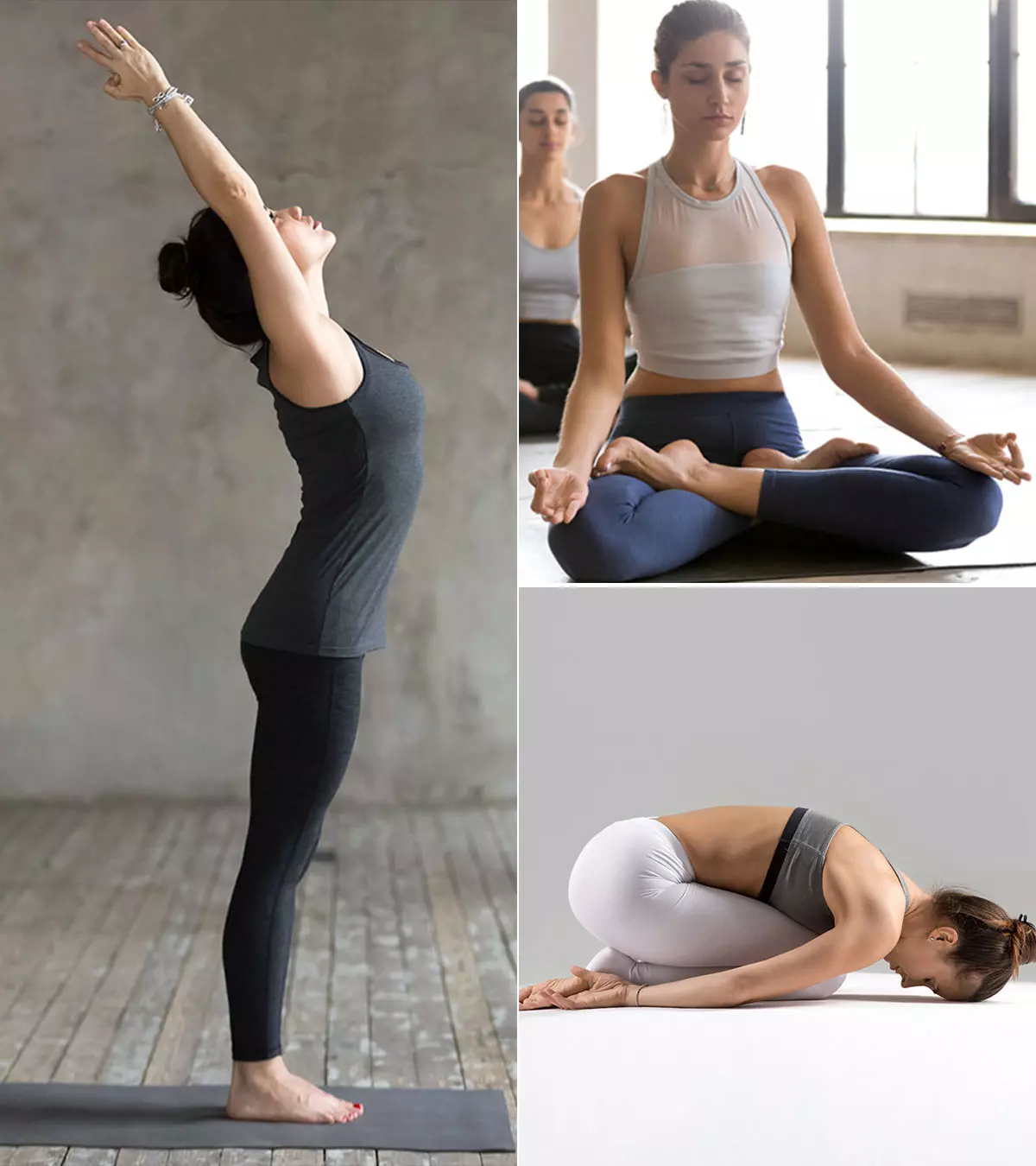
Image: Shutterstock
Yoga for teenagers is as beneficial as it is for adults. According to the American Academy of Pediatrics (AAP), yoga is a safe and potentially effective therapy that can help children and teens cope with physical and mental conditions and help improve emotional and behavioral well-being (1). Born thousands of years ago in India, yoga is a practice that means “to yoke” or “to join” the individual consciousness with universal consciousness, bringing ultimate harmony between the mind, body, and spirit (2) Yoga typically involves working on three aspects – the physical postures (asanas), breathing exercises and techniques (pranayama)iA powerful relaxation and stress-relieving yoga practice that involves controlled breathing to improve overall health and well-being. , and meditation (dhyana). There are several different yoga types that one can practice. However, the most popular ones are Iyengar YogaiA style of yoga that focuses on proper posture in each step of yoga and the use of wooden gadgets such as belts, and ropes. , Bikram YogaiA type of yoga practiced in a hot room that involves 26 poses and two breathing exercises. ,Hatha yogaiA type of yoga that may exert you and includes physical ways of balancing the solar and lunar energies in you. , and Vinyasa yogaiA type of yoga practice that links various yoga poses in a seamless or fluid way. (3). Keep reading to find out more about the benefits of yoga for teenagers, different yoga poses teenagers can try, and the safety measures to follow while doing yoga.
Safety Measures To Take While Doing Yoga
Yoga is generally considered a safe practice. It can be done by healthy individuals under the supervision of a trained and qualified instructor to improve their health and wellness. Like any other physical activity, injuries can occur in yoga, too.
Sprains and strains are more common with yoga than severe injuries, which are rare. The following precautions should be taken to reduce the risk of injury.
- Learn and practice yoga under the guidance of a qualified teacher as they will do a systematic review of your postures.
- Wear clothes you can move in easily and always use a mat with good support and grip.
- Do not do yoga immediately after a meal. Maintain a gap of two to three hours between meals and yoga practice. Listen to your body while practicing yoga.
- If you have any previous injuries, medical issues, illness, or other health problems, advise the teacher at the beginning of class. It will help them ascertain the yoga asanas you should avoid.
- Do not push your limits of tolerance or ever push your body to the point of experiencing pain. Over time, flexibility generally improves, and you can practice the asanas with greater ease.
- If you are new to yoga, avoid extreme postures like headstands, shoulder stands, the lotus position, and forced breathing as you could cause injury. Start with simple, easily accessible yoga asanas and breathing techniques.
- Be aware that “hot yoga”iA form of yoga practiced in a heated or humid room. has special risks related to overheating and dehydration.
Yoga Poses For Teenagers
Yoga poses can be done while standing, sitting, sleeping, and supine or resting. The following are the common and useful yoga poses for teenagers.
Standing yoga poses for teenagers
1. Mountain pose (Tadasana)
Image: Shutterstock
Benefits:
Tadasana is the foundation of all standing poses. It is a great starting pose, resting pose, or a tool to get a better posture.
How to:
- Stand with your toes touching the ground and heels slightly apart from each other on a yoga mat over a firm surface.
- Lift and spread your toes and lay them softly down on the floor. Adjust your feet and body slowly so that the sole of the feet covers the maximum ground. Rock back and forth, and gradually come to a standstill in a balanced and good posture.
- Inhale and lift your arms straight above the head. Press the shoulder blades into the back and then widen them before releasing. Lift the top of your sternumiA long, flat, T-shaped bone located in the middle of the chest and is part of the ribcage. upwards without pushing the ribs to the front.
- Firm your thigh muscles and lift the knee cap, without putting pressure on the lower belly or hardening it. Lift your inner ankles to strengthen the inner arches and imagine a line of energy along the inner thighs, groin, upper torsoiThe central part of the body that extends from the neck to the groin. , neck, head, and through the crown of the head.
- Turn your thighs slightly inward, lengthen the tailbone downwards, and lift the pubic bone upwards.
- Keep your under-chin parallel to the floor, throat soft, and tongue wide and flat on the floor of your mouth. Keep your eyes relaxed.
- Stay in this pose for 30 seconds to one minute and practice inhalation and exhalation gently. If you experience distress or pain, come out of the posture.
2. Chair pose (Utkatasana)
Image: Shutterstock
Benefits:
Utkatasana helps the muscles of the arms, legs, and also the heart and the diaphragm.
How to:
- Stand in tadasana. Take a deep breath in and extend your arms towards the ceiling while keeping them perpendicular to the floor.
- Keep your hands parallel to each other with palms facing inwards or join the palms.
- Breathe out and bend your knees so that the upper torso forms a right angle with the knees while the thighs should be parallel to the ground. Keep your arms extended.
- Keep your shoulders broad, and try to pull your tailbone towards the ground to achieve a good stretch of the lower back.
- You can be in this pose for 30 seconds to one minute before coming back to normal posture. If you experience distress or pain, come out of the posture.
- Take a deep breath again, straighten your knees, and exhale while bringing your arms back to their normal position.
3. Standing forward fold (Uttanasana)
Image: Shutterstock
Benefits:
This yoga pose helps in stretching and strengthening the hamstring muscles.
How to:
- Stand in tadasana with the hands on the hips. Exhale and bend forward from the hips and not the waist. Lengthen the upper torso as much as you can while bending by drawing it out of the groin in a way that the space between the pubis and top sternum is opened up.
- Bring your palms or fingertips to the floor next to your feet or slightly in the front of the feet, if possible, while keeping your knees straight. If you can’t reach the floor, then cross the forearms and hold your elbows.
- Press the heels firmly into the floor, lift the hip bones upwards, and turn the upper thighs slightly inwards.
- Stretch and extend the torso with each inhalation. Release a little more fully into the forward bend with each exhalation.
- Let your head hang easily between the shoulder blades.
- Stay in the posture for 30 seconds to a minute.
- For coming out of the pose, put your arms back on your hips, and gently come up with an inhalation while keeping the torso straight.
 Be watchful
Be watchful4. Eagle pose (Garudasana)
Image: Shutterstock
Benefits:
Garudasana strengthens and stretches the ankles, thighs, hips, shoulders, and the upper back.
How to:
- Stand in a tadasana. Lift the right foot. Balance your body on the left foot.
- Move your right thigh across the left thigh in a way that the right foot gets support from the lower calves of the left foot.
- The toes of the right foot should be pointed towards the floor.
Extend your arms straight out, keeping upper arms parallel to the floor while bending the lower arms to point them upwards. Keep the lower arm parallel to each other. - Extend your scapulaeiA pair of triangular bones that connects clavicles to the upper arm bone and is located at the back of the shoulder. across the upper torso. Intertwine your hands in a way that the left hand is above the right hand.
- Engage the elbow of the left hand in the right elbow. Keep the forearms perpendicular to the floor.
- The back of the palms should be facing each other.
- Now shift your palms facing each other. The hands should be moved until the thumb of your left hand comes in front of the right hand’s little finger. Raise your hands upwards in the same posture.
- Stay in the pose for 15 to 30 seconds. Gradually, unwind and return to tadasana and repeat the pose using the left arms and legs. If you experience distress or pain, come out of the posture.
5. Extended hand-to-big-toe pose (Utthita Hasta Padangustasana)
Image: Shutterstock
Benefits:
There are various benefits of Utthita Hasta Padangustasana as it strengthens the legs and the ankles, stretches the back of the legs, and improves balance.
How to:
- Stand in tadasana. From tadasana, lift and bring your left knee towards your belly.
- Reach your left arm from inside and hold the toes. If your thigh muscles are tight and this seems difficult, hold a strap looped around the left sole.
- Firm the right thigh and press it inward.
- Inhale and extend the left leg forward as much as you can while keeping the knee straight. If you are ready, swing the left leg outward.
- Keep breathing as it improves the focus.
- Hold for 30 seconds. Bring the leg back to the center with an inhale and lower the foot to the floor with an exhale. If you experience distress or pain, come out of the posture.
- Repeat with the right leg.
- Maintain the balance to avoid falling and injuries.
b. Sitting yoga poses for teenagers
6. Lotus position (Padmasana)
Image: Shutterstock
Benefits:
Padmasana pose improves digestion, reduces muscle tension, helps bring blood pressure under control, relaxes the mind, and reduces menstrual discomfort.
How to:
- Sit on a yoga mat with legs stretched out in front while keeping your spine erect.
- Bend the right knee and place your right foot on the left thigh. Make sure that the soles of your feet point upwards, and the heel stays close to the abdomen.
- Repeat the same with the other leg.
- Place your hands on knees in mudra position. With an erect spine, closed eyes, and a straight head, inhale and exhale in the same position for a few minutes. If you experience distress or pain, come out of the posture.
7. Seated forward bend (Paschimottanasana)
Image: Shutterstock
Benefits:
Pachimottanasana stretches the lower back, hamstrings, and hips. It also tones the abdominal organs, pelvic organs, and the shoulders.
How to:
- Sit up with legs stretched out straight in front of you, keep the spine erect, and keep the toes flexed towards you.
- Breathe in and raise both of your arms above your head.
- Breathe out and bend forward from your hips while moving the chin towards the toes. Keep your spine erect and move towards the toes instead of moving towards the knees.
- Try to hold your toes with your hands, and if that is not possible, place your hands wherever they can reach comfortably.
- Keep your head down for 30 to 60 seconds and repeat this yoga sequence two to three times. If you experience distress or pain, come out of the posture.
- Come into a sitting position while inhaling and exhale, come to rest.
8. Butterfly pose (Badhakonasana)
Image: Shutterstock
Benefits:
Badhakonasana stretches inner thighs and knees, while improving hip and groin flexibility. It helps in intestine and bowel movement, and ease fatigue from long hours of walking or traveling. You can also get relief from menstrual cramps and discomfort.
How To:
- Sit on a yoga mat with your spine straight and legs spread straight out.
- Bend your knees and bring your feet towards yourself in a way that the heels of both the feet should touch each other.
- Grab your feet tightly by putting your hands under your feet.
- Try and keep the feet as close to the groin as possible.
- Take a deep breath in and press your thighs and knees down to the floor while breathing out.
- Slowly start flapping both your legs like the wings of a butterfly and increase the speed gradually.
- Flap for 15-20 times and then reduce the speed and gently stop. Take a deep breath in and while exhaling, gently bend down with the spine erect and chin up.
- Try to press the knees and the thighs closer to the floor by pressing the elbows onto them. Take a deep breath and bring the torso up. Gently straighten the legs in front of you.
9. Mill churning pose (Chakki Chalanasana)
Image: Shutterstock
Benefits:
Chakki Chalanasana tones the back, abdomen muscles, arm muscles, and opens up the chest and the groin. It helps in the reduction of abdominal fat and preventing sciaticaiA pain that originates in the spine, extends down the back of the leg and travels along the path of the sciatic nerve. . It also tones uterine muscles and helps in preventing painful menstrual cycles.
How to:
- Sit on the floor with your legs spread wide apart. Clasp your hands and outstretch your arms at shoulder height in front of you.
- Take a deep breath and start moving your body from the front and right as if you are forming an imaginary circle with your upper body.
- Inhale as you go forward and right and exhale as you go backward and left.
- Make 5-10 rounds in one direction and then repeat them in the other direction.
Resting yoga poses for teens
10. Child pose (Balasana)
Image: Shutterstock
Benefits:
Balasana relaxes the back muscles, relieves constipation, and calms the nervous system.
How to:
- Fold your legs and sit on your heels with your hips resting on the heels. Bend forward and lower your forehead to the floor.
- Keep your arms alongside your body with your hands on the floor and palms facing up. If you do not feel comfortable, make fists with both your hands, place them on each other, and rest your head on the fist.
- Gently press your chest on the thighs and hold. Stretch your upper torso.
- Gently come up on your heels and relax.
- If you experience distress or pain, come out of the posture.
11. Boat pose (Naukasana)
Image: Shutterstock
Benefits:
Naukasana strengthens and tones the back, arms, abdomen, and leg muscles.
How to:
- Lie on your back with your feet together and arms beside you.
- Take a deep breath in and lift your chest and feet off the ground as you exhale. Simultaneously, raise and stretch the arms toward the feet.
- Notice the tension in your navel area as the abdominal muscles contract and become engaged.
- Continue breathing in and out. Keep your gaze, fingers, and toes in a parallel line.
- As you exhale, come back slowly to the ground and relax.
- If, at any time, you experience distress or pain, come out of the posture.
 Quick tip
Quick tip12. Wind-relieving pose (Pavanamuktasana)
Image: Shutterstock
Benefits:
Pavanamuktasana strengthens and tones back, abdomen, arms, leg muscles, and eases tension in the lower back. It also massages abdominal organs, improves blood circulation, aids in better digestion, and helps in the release of gas.
How to:
- Lie on your back with feet together and arms beside the body.
- Breathe in, and as you exhale, bring your right knee towards your chest and press the thigh on your abdomen with clasped hands.
- Breathe in again, and as you exhale, lift your head and chest off the floor and touch your chin to your right knee.
- Hold for a few seconds while continuing inhalation and exhalation.
- Tighten the grip of hands as you exhale and loosen the grip when you inhale.
- Repeat this pose with the other leg and then with both legs together.
- Rock up and down or roll from side to side a few times and then get up.
- If, at any time, you experience distress or pain, come out of the posture.
13. Corpse pose (Savasana)
Image: Shutterstock
Benefits:
Savasana brings a deep, meditative state of rest by releasing stress. It helps repair tissues, reduce blood pressure, anxiety, and insomnia. It is a perfect way to end a yoga session.
How to:
- Lie flat on your back. Use a small pillow behind your back if required. Close your eyes.
- Keep your legs comfortably apart, relaxed, and toes pointing towards outside.
- Leave your arms relaxed alongside your body and keep your palms facing upwards.
- Bring attention to every part of your body, and try to relax your body.
- Keep breathing slowly and gently.
- Make sure you do not fall asleep.
- Stay in the same pose for 10-20 minutes and then gently roll onto your right, while still keeping your eyes closed. Lie there for a minute or two. You can begin with just a minute or two and work up to a longer time.
- Take the support of your right hand and come to the sitting position.
- Open your eyes when you feel relaxed and de-stressed.
- If you experience distress or pain, come out of the posture.
14. Lotus pose (Padmasana)
Image: Shutterstock
Benefits:
Padmasana benefits include improved digestion, reduced muscular tension and blood pressure, relaxation of the mind, aid during childbirth for pregnant women, and alleviation of menstrual discomfort.
How to:
- Sit down on the floor or a mat, legs straight in front of you, keeping your back nice and straight.
- Bend your right knee, putting it on your left thigh. The feet should point up, and the heel near your belly.
- Do the same with your other leg.
- Cross your legs, and put your hands on your knees in a special way.
- Keep your head up and your back straight.
- Take slow, gentle breaths in and out while you stay in this comfortable position.
Benefits Of Yoga For Teenagers
Yoga has multiple proven benefits. It is beneficial for mental, physical, and emotional well-being across all age groups. The following are a few general benefits of yoga that may be achieved for all age groups.
- Improves strength
- Increases stamina
- Improves balance
- Increases flexibility
- Reduces anxiety and aids in stress management
- Improves mental clarity and promotes inner peace
- Improves sleep
- Relieves lower back and neck pain
- Helps regulate menstrual cycle
- Helps in weight loss
- Helps develop self-discipline and confidence
 Point to consider
Point to considerBlogger Tanya von Varchmin shares her experience of doing yoga since her teenage years and how it positively impacted her life: “I was 17 and already had severe back problems. A doctor told me I was fine, the problem wasn’t with my back; I was just a tall teenager (185cm, just over 6 feet). My bones were growing. I just need to wait, and it will pass. I didn’t want to wait. I wanted to do something. Somehow, I found my way to a morning yoga class. The first months were dreadful: I wasn’t flexible, but I was impatient. The only thing that made me stay and continue going to classes was how good I felt afterward. After each class, my body was pleasantly tired, I felt inspired and empowered, and, most importantly, my back pain was gone.
“At first, it was pure exercise. I copied postures from my teachers, combining them with the breathing techniques they taught me. I didn’t think at all about the whole philosophy behind it. I saw the results: the pain was gone, my body was stronger, I looked and felt better. So it worked (i).”
Regular yoga practice can benefit teenagers in the following ways (3) (4).
1. Improves fitness and physical health
Students participating in yoga often develop more flexible bodies. It may help in improving coordination, balance, strength, and flexibility (5). Regular yoga can also enhance athletic performance and help the body recover from injuries.
2. Reduces stress and anxiety
High school can be a stressful period for teenagers with both academic and personal challenges. Yoga may help calm the nervous system, provide a medium for relaxation, and thus regulate the teen’s response to stress. From 2013 to 2019, 9.4% of children between the ages of three and 17 were diagnosed with anxiety, according to the CDC’s Morbidity and Mortality Weekly report of February 2022.
3. Prevents excess weight gain
Overeating, excess consumption of junk food, and stress can lead to weight gain in teenagers. Yoga may help in losing excess weight. Research conducted in 2013 looked at 17 yoga-based weight control programs and found that most of them led to gradual, moderate, and healthy weight reduction (3).
4. Improves focus and performance
Some research suggests that six to eight weekly sessions or approximately 20 hours of yoga class time may help school-aged children diagnosed with ADHD (attention deficit hyperactivity disorder) (6).
5. Improves self-esteem and body image
Adolescence is a time when children might experience low self-confidence, body image issues, and low self-esteem. Yoga is rooted in the principle of non-judgment. Regular yoga practice may make a teen more self-accepting by letting them connect with their inner selves and promoting sound mental health. As a powerful tool for self-care for teens, yoga can help young people develop a positive relationship with their bodies and minds.
6. Encourages creativity
Yoga may help in reducing impatience and impulsivity by improving the ability to be attentive to what is arising and responding effectively. It may help teenagers gain composure and become more disciplined.
7. Develops discipline and self-regulation
Yoga helps in reducing impatience and impulsivity by improving the ability to be attentive. It may help teenagers gain composure, focus on self-improvement, and maintain self-discipline. Yoga empowers teenagers and fosters a sense of control over their well-being, encouraging them to set personal goals and monitor their progress.
Frequently Asked Questions
1. How do I teach yoga to a teenager?
To effectively teach yoga to a teenager, you should set reasonable expectations, be encouraging, create a friendly atmosphere, be an active listener, understand the teenagers, and adapt to their energy levels (7).
2. Can a teenager do face yoga?
Yes, teenagers can do face yoga to loosen their tense muscles and relax their faces. Simple yoga stretches would help (8).
3. How can practicing yoga help teenagers develop a greater sense of mindfulness and self-awareness?
Yoga includes mindful poses and breathing exercises to help a teen develop a deeper connection with their thoughts, emotions, and physical sensations. Additionally, yoga can provide teens with some calm time for self-reflection and introspection, which encourages teens to be present in the current moment and increase self-awareness (10). Mindfulness techniques can enhance emotional regulation and mental clarity while promoting relaxation and reducing anxiety.
4. How can yoga be integrated into a teenager’s academic and extracurricular activities to enhance their performance and overall well-being?
There is no guided way to integrate yoga into a teenager’s academic and extracurricular activities. However, some tips can prove beneficial. For instance, schools may incorporate a five to ten minutes yoga class before the start of the day to improve teenagers’ concentration levels. Alternatively, teenagers can be encouraged to do breathing and gentle stretching between study breaks to relax and rejuvenate the mind and body. Furthermore, schools can consider offering teens yoga classes as a part of their curriculum to emphasize the importance of mindfulness.
5. How can I make yoga engaging for teenagers?
Play soothing music that suits your teen’s preferences. You may plan themed classes that cater to your child’s interests, such as yoga for sports performance or stress relief. If they feel self-conscious or demotivated about practicing yoga alone, consider a group setting. Most importantly, ensure your teen does the asanas at their pace and set goals they feel comfortable with.
6. How can teenagers incorporate yoga into their daily routines?
Teens can start by dedicating 10 to 15 minutes of their day to practicing yoga, whether early in the morning, during study breaks, or before bed. Setting a routine that fits smoothly into your teen’s schedule can help them develop a habit, leading to long-term benefits.
With teenage being the formative and one of the most important phases of life in terms of both mind and body, yoga for teenagers can provide an ideal management technique for all those changes. In addition, yoga has been in practice for the longest time thanks to its various health benefits, such as maintaining a healthy weight, improving focus, and discipline. So making yoga a part of your teenager’s daily routine and practicing these poses can help attain a calm and relaxed mind along with a healthy body and improved self-confidence.
Infographic: Precautionary Measures Teens Should Take While Doing Yoga
Yoga can provide numerous physical and mental benefits, but it’s important to remember that it’s also a form of exercise that requires proper technique and precautions. So, look through the infographic below for some simple but important measures you can advise your teens to take to ensure safe and enjoyable yoga practice. Illustration: Momjunction Design Team
Key Pointers
- Yoga benefits teenagers’ physical and mental well-being by focusing on physical postures, breathing, and meditation.
- Yoga can help reduce stress and anxiety, improve sleep, and enhance physical flexibility and strength.
- Yoga can also improve focus and concentration, boost self-esteem, and increase mindfulness and body awareness.
- It is important for teenagers to participate in yoga under the supervision of a qualified instructor who can modify the exercises to meet their specific needs and abilities.
Yoga is a great way for teens to stay healthy and fit. Learn about the many benefits yoga can offer teens in this video!
Personal Experience: Source
MomJunction articles include first-hand experiences to provide you with better insights through real-life narratives. Here are the sources of personal accounts referenced in this article.
i. I just can’t do a headstand: And other things I’ve learned after 10 years of practicing yoga;https://medium.com/@von_rodina/i-just-cant-do-a-headstand-and-other-things-i-ve-learned-after-10-years-of-practicing-yoga-20cb4fc6bbdb
Illustration: Benefits Of Yoga For Teenagers And 13 Simple Poses
Image: Stable Diffusion/MomJunction Design Team
References
1. Yoga for Health; National Center For Complementary And Integrative Health
2. Yoga; KidsHealth from Nemours
3. Yoga: What You Need To Know; National Center For Complementary And Integrative Health
4. Permission to Unplug: The Health Benefits of Yoga for Kids, American Academy Of Pediatrics
5. Arndt Bussing et al., Effects of Yoga on Mental and Physical Health: A Short Summary of Reviews; U.S. National Library of Medicine
6. Lisa C. Kaley-Isley et al., Yoga as a Complementary Therapy for Children and Adolescents; Europe PMC
7. Yoga for Health; National Center For Complementary And Integrative Health
8. Yoga for Stress Relief; Nemours Teens Health
9. Boat Pose – Paripurna Navasana; Australian School of Meditation and Yoga
10. Mindfulness; NHS
Community Experiences
Join the conversation and become a part of our nurturing community! Share your stories, experiences, and insights to connect with fellow parents.
Read full bio of Kintla Striker
Read full bio of sanjana lagudu
Read full bio of Swati Patwal
Read full bio of Shinta Liz Sunny





